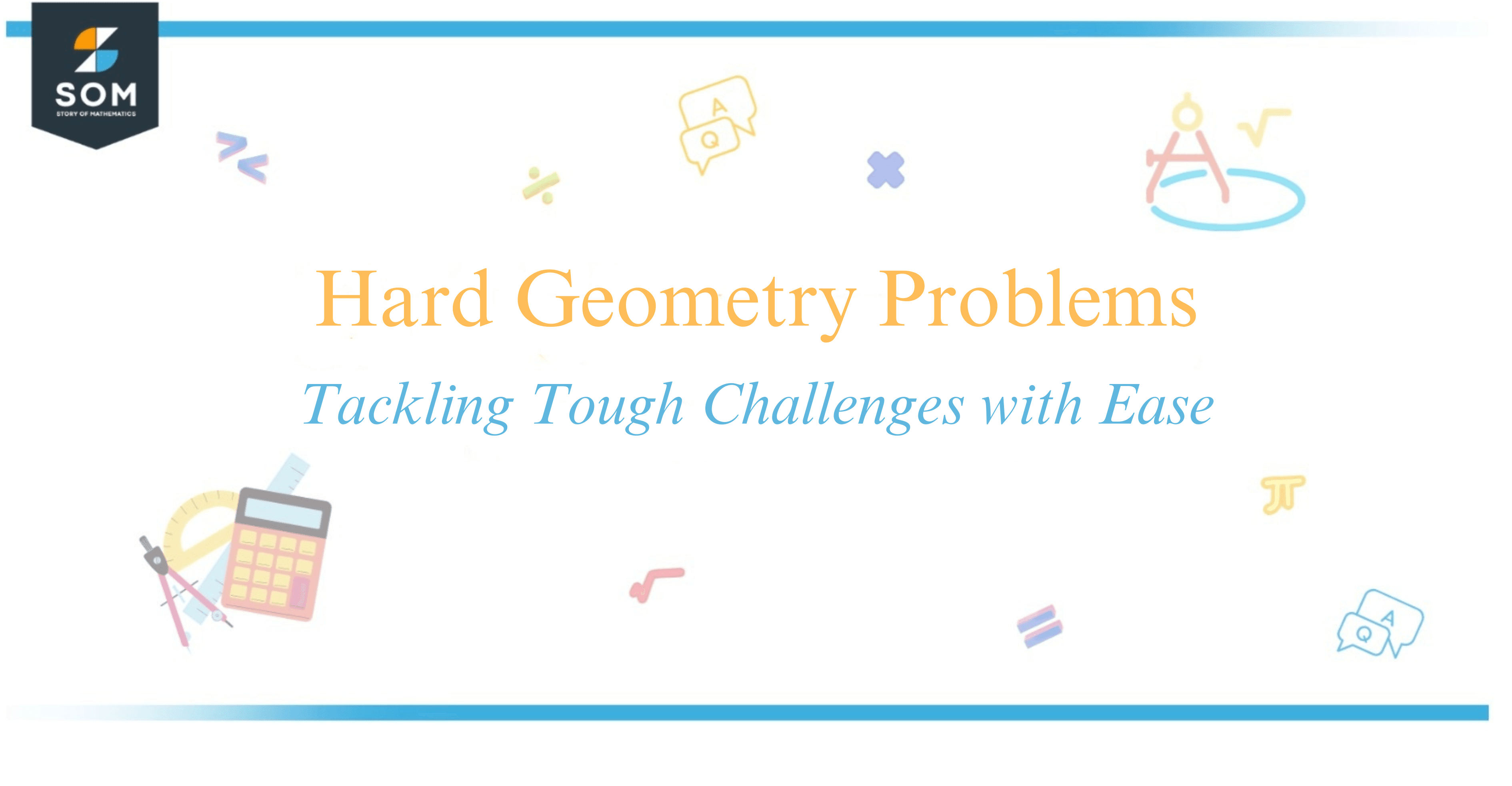
Geometry problems often involve shapes, sizes, positions, and the properties of space. As I delve into the realm of geometry, it’s fascinating to explore the intricate challenges posed by harder problems in this field.
These problems test my understanding of concepts such as congruence, similarity, the Pythagorean Theorem, as well as area and perimeter calculations.
I find that working through these problems hones my analytical skills and enhances my spatial reasoning abilities.

Hard geometry problems usually cover a diverse array of topics, from basic triangle rules to complex geometric proofs.
Showcasing mastery in this domain often calls for a blend of creativity and meticulousness, especially as I encounter problems that push the boundaries of my knowledge. For example, proving that two or more shapes are congruent or similar or finding the area of intricate figures can be quite a brain teaser.
The journey through these challenges is not just about finding the right answers; it’s also about appreciating the beauty and precision of geometry itself. Are you ready to join me in unraveling the elegance and complexity of these geometrical puzzles?
Complex Geometry Problems
In my journey through mathematics, I’ve found that complex geometry problems often intimidate students preparing for standardized tests such as the ACT, GRE, and SAT. These problems can involve a variety of geometric figures, from triangles and circles to circular cylinders and squares.
When tackling triangles, I always pay attention to the isosceles and equilateral types. It’s crucial to remember that isosceles triangles have two sides of equal length, and the angles opposite these sides are equal. As for equilateral triangles, all three sides and angles are the same, with each angle measuring $\frac{\pi}{3}$ radians, or $60^\circ$.
Here’s a quick table summarizing triangle rules:
| Triangle Type | Defining Feature | Angle Relationships |
|---|---|---|
| Isosceles | 2 equal sides | 2 equal angles |
| Equilateral | 3 equal sides | 3 angles of $60^\circ$ each |
| Right Triangle | 1 angle of $90^\circ$ | Pythagorean Theorem applies |
For circles, understanding the terminology is key. The diameter is twice the radius, and a chord that passes through the center of a circle forms a diameter. A semicircle is half of a circle, and when calculating area, I recall the formula $A = \pi r^2$, where $r$ is the radius.
If the problem involves a figure with both a triangle and a semicircle, I check if they share a side or a vertex. This often leads to interesting relationships between angles and sides which are essential to finding a solution.
Although these concepts might seem daunting at first, with practice, solving these types of geometry problems becomes a rewarding and enlightening act.
Solving Geometry Problems
When I tackle geometry problems, I think of them as intricate math puzzles. In my experience, practice is key to becoming proficient.

A reliable method I use involves several steps:
Understand the Problem: I carefully read the problem to grasp what’s being asked, especially the value we are trying to find, like the “value of ( x )”.
Draw It Out: I sketch the geometry figure, labeling known measurements and angles, which helps visualize and identify the ASA (Angle-Side-Angle) or other relevant theorems.
Apply Theorems: My familiarity with geometric principles, often refreshed by reading test prep books or resources from Stanford University, comes in handy.
Test Different Approaches: I try different problem-solving techniques, using tools from the Get 800 collection or insights from the MindYourDecisions channel.
Check the Work: I always verify my answers to avoid common mistakes.
Here’s a quick reference I’ve created that might be handy:
| Step | Action |
|---|---|
| 1 | Read & understand the geometry problem. |
| 2. | Draw the problem, and label known and unknown parts. |
| 3. | Apply geometric theorems and postulates. |
| 4. | Test approaches and practice with different problems. |
| 5. | Double-check answers for accuracy. |
The practice doesn’t just involve solving problems from books or test prep books; it also includes explaining concepts to others, which could be classmates or a teacher.
In my journey of learning and teaching, I’ve found that discussing the process openly in a friendly manner greatly reinforces understanding. As with all things, especially something as logical as geometry, maintaining persistent practice and a can-do attitude is essential in mastering challenging problems.
Conclusion
In grappling with hard geometry problems, I’ve encountered numerous challenges that have pushed my understanding to new heights.
From the intricate relationships between angles to the deep insights required for problem-solving, these problems offer a true test of mathematical skill. Mathematical contests often feature such problems to differentiate between good and exceptional problem solvers.
One thought that stands out is the value of persistence and logic. In facing problems about finding an unknown angle or solving for a particular length, the approach isn’t merely about applying formulas.
It requires a creative combination of geometry principles, sometimes integrating concepts borrowed from other areas of mathematics, such as algebra or trigonometry.
Reflecting on famous problems, like those I’ve come across from various online platforms, it becomes clear just how beautiful and complex geometry can be.
These problems often serve dual purposes, they are not just queries to be answered but lessons that deepen my appreciation and understanding of mathematics. The journey through tough geometry questions is not only about reaching the correct answer but also about appreciating the intricacies of the geometric world.
I encourage my readers to embrace these difficult problems with a sense of adventure. Remember, tackling a geometry problem is more than a test; it’s an opportunity to explore the elegance of mathematics.
Whether you solve a challenging problem on the first try or it takes numerous attempts, each effort enhances your mathematical intuition and prowess.
